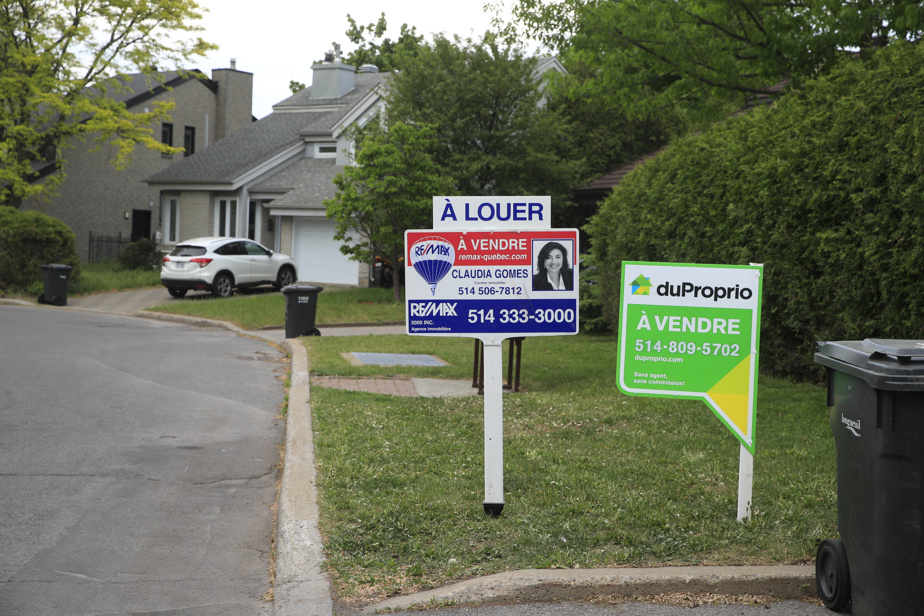(Toronto) When Bob Dugan looks to the future of Canada’s housing market, he doesn’t see the rosy picture that many aspire to.
“I’m actually worried that affordability will get worse, not better, unless we can fix it,” Canada Mortgage and Housing Corporation’s chief economist told La Presse on Friday. Canadian.
The Canadian Real Estate Association reported Thursday that the real national average home price was $729,044 in May, up 3.2% from a year earlier, while the average seasonally adjusted for homes had reached $715,290, up 2.7% from April. The average was over 1 million in the Greater Toronto Area and several parts of British Columbia.
Dugan’s feelings about declining affordability have been simmering at the federal housing agency for some time, prompting him to sound the alarm last summer, when she revealed that the country needed to build 3.5 million more homes than planned by 2030, to achieve minimum affordability.
A year later, the situation is not improving. Some 271,000 homes were built two years ago and about 260,000 more last year, Dugan said.
The annual pace of housing starts – a measure of the start of home construction and a key indicator of how well Canada is filling gaps in housing supply – fell 23% in May from April, while that starts of apartments, condominiums and other types of multi-unit housing have declined in Vancouver, Toronto and Montreal.
Mr. Dugan now calculates that between 210,000 and 220,000 homes will be built this year.
I hope my predictions are wrong, but given the current situation, I am not optimistic that we are on track to double the pace of housing starts.
Bob Dugan, Chief Economist of Canada Mortgage and Housing Corporation
Housing starts are not less active due to a lack of interest or weak demand for construction, but rather due to labor shortages, rising interest rates and higher material costs, as well as zoning issues and the “not in my backyard” syndrome, which refers to people who object to certain projects going ahead in their neighborhood but not in others regions.
Yet CMHC believes that solving the affordability problem is not impossible. It will just require many parties to act in concert.
“There is no single solution. There is no single institution or level of government or organization that can solve the problem,” argued CMHC CEO Romy Bowers in the same discussion as Mr. Dugan.
” That [implique] truly all of Canada, a response in which everyone pitches in. »
Support for Rental Housing
The star element of the response must be supply, assure Mme Bowers and Mr. Dugan.
Top of M’s wish listme Bowers is finding a more concerted effort to address the lack of built-for-rental housing.
It has about 4.5 million of these homes, and while Canada has seen a slight uptick in recent years, most of these homes are “super old” as they were mostly built in the 1960s, 1970s and 1980s. .
But demand for these homes is high with rising immigration – Canada’s population hit 40 million on Friday – and many just want a roof over their heads.
“But because we haven’t invested in built-to-let homes, there just isn’t enough supply to meet the demand,” Ms.me Bowers.
CMHC has attempted to further stimulate these units with a rental construction financing initiative, which provides low-cost financing to borrowers during the riskiest phases of rental apartment construction.
But rental units can be long-term projects. In Toronto, it can take up to eight and a half years to build one from concept to move-in. Many builders just want to build something, sell it and move on, so they have less incentive to build these properties.
CMHC believes that more rental housing could be built if all levels of government worked together to find solutions.
Without this collaboration, the country is dealing with two housing crises, estimated Mr.me Bowers: one where the most vulnerable people face a dire socio-economic situation, the other where the middle class is also struggling in the real estate market.
Density should be favored
While everyone can be helped by the offer, a change in attitude might also be needed.
“We have this idea that success means having your own four-bedroom, two-story house with a yard and that sort of thing,” Dugan observed. “I think we need to get away from that in the big cities. »
Although density is often reviled, it has played a crucial role in providing housing for several other major cities like Hong Kong and London.
For Canada to replicate that, people should get over their “not in my backyard”, and developers should build bigger condominiums where people feel they have the opportunity to raise children or have space for recreation and visitors,” Mr. Dugan continued.
But how confident is CMHC that Canada can achieve all of this?
Mme Bowers believes that the challenges we face can be solved. Mr. Dugan agrees that measures will have to be put in place.
“Crises often lead to innovation and new ways of doing things, so I think I’m hopeful that we’ll find different kinds of solutions to build more efficiently,” he said.
“We will improve the situation, but it is difficult to integrate this into the forecast when you do not know when it will happen, or what this innovation will be. »
